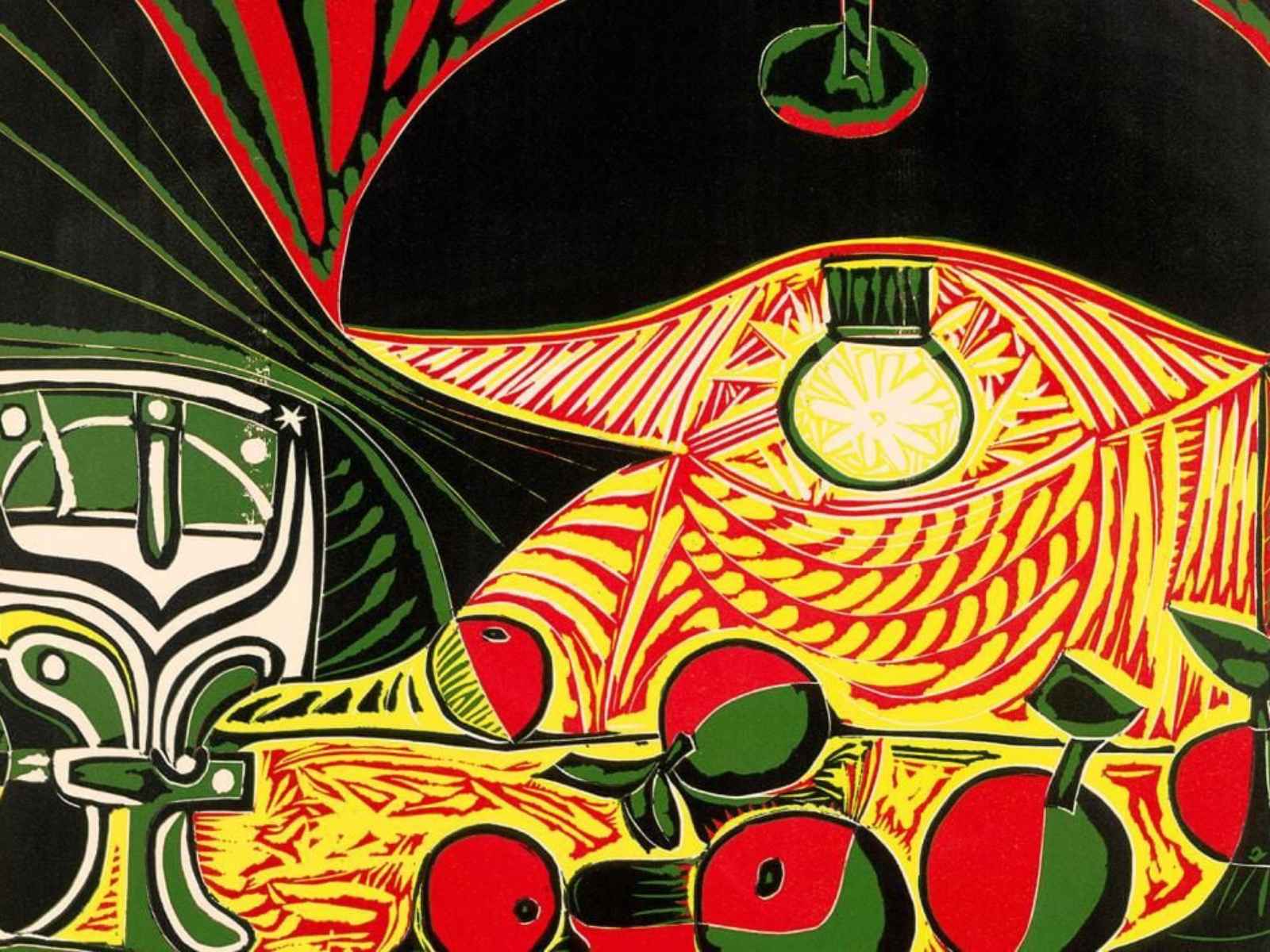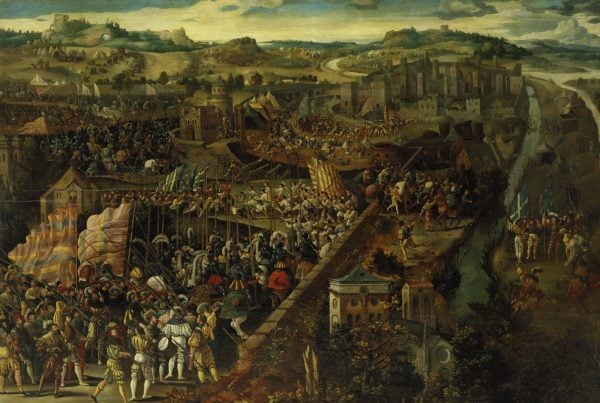Pablo Picasso, born in Spain in 1881, was a revolutionary force in modern art. Known for his diverse artistic approaches, Picasso’s experimentation with linocuts added a new dimension to his rich portfolio. He began exploring this medium in 1939, and his work reflects a unique interplay of colour and form. He layered vibrant colours to transform simple linoleum into sophisticated, vivid images using the reductive technique.
Linocut printmaking became one of Picasso’s significant tools to redefine artistic expression. His use of the reductive technique allowed him to build depth through colour layers, offering new perspectives in modern art. Collectors and art enthusiasts are drawn to Picasso’s linocuts for their bold compositions and emotional intensity, underscoring his renowned status in the art world.
Picasso’s legacy in modern printmaking persists, influencing countless artists who admire his pioneering spirit and innovation. His linocuts not only exhibit his mastery of form but also capture his continuous quest to push the boundaries of art. These works remain a testament to Picasso’s profound impact and enduring relevance in art history.
Table of Contents
Key Takeaways
- Picasso pioneered linocuts using a unique reductive technique.
- His vibrant colour layers in linocuts redefined modern art.
- Picasso’s legacy continues to influence contemporary printmaking.
Pablo Picasso’s Biography
Pablo Picasso, a Spanish artist, made groundbreaking contributions to modern art. His journey from an art-loving child in Spain to a renowned figure in France shaped his legacy in innovative ways, revealing his role in redefining art in the 20th century.
Early Years and Artistic Beginnings
Born in Malaga, Spain, on 25 October 1881, Pablo Picasso was surrounded by art from a young age. His father, José Ruiz Blasco, was an art teacher, sparking Picasso’s early interest in drawing. By the age of seven, he had already started formal art training.
Moving to Barcelona in his adolescence marked a turning point. It was here that Picasso attended the School of Fine Arts. During this time, he impressed his teachers with his advanced skills and passion. His early works displayed a deep understanding of classic forms but hinted at his desire to explore and innovate.
Rise to Prominence
Picasso’s move to Paris in the early 20th century placed him at the centre of the art world. In Paris, he co-founded the Cubist movement, a revolutionary style that deconstructed objects into geometric shapes. This disruptive style challenged traditional perspectives and changed the art landscape forever.
Picasso was not restricted to one style or medium. He experimented with collage, sculpture, and ceramics, showcasing his versatility. Works like “Les Demoiselles d’Avignon” exemplified his bold approach. His personal life, often under scrutiny, was as dynamic as his art, adding intrigue and complexity to his public image.
Later Years and Legacy
In his later years, Picasso continued to innovate, even exploring linocuts. Living in France, his life was full of artistic exploration. He remained active and engaged with the art community until his death in 1973. Despite his passing, his influence continues to thrive.
Picasso’s legacy is vast, impacting artists across the globe. His ability to adapt, innovate, and lead in various art styles left an indelible mark on modern art. His works are displayed in museums worldwide, reflecting his significant contributions to art and culture.
Linocut Technique and Development
Linocut printmaking began as a simpler alternative to woodcut, but it soon attracted artists like Pablo Picasso, who transformed its potential. Through innovative techniques like reduction linocuts and collaborations with notable figures, Picasso significantly advanced the medium.
Origins of Linocut Printmaking
Linocut printmaking began in the early 20th century as an accessible form of art. Originally, it was used by artists and craftsmen who sought a cheaper alternative to woodcut methods. Carving was done on linoleum, a soft and flexible material, which made it easier to manipulate than wood.
The process involves gouging out unwanted areas to leave raised portions that hold ink. Early adopters used simple designs and bold outlines. Over time, linocut evolved, gaining popularity among modern artists who appreciated its versatility and unique texture. This technique allowed artists to produce striking prints with distinct lines and vibrant colours, making it a valuable addition to the printmaking repertoire.
Picasso’s Innovation in Linocuts
Pablo Picasso was pivotal in elevating linocuts to a fine art form. While he was already accomplished in other artistic areas, he embraced linocuts with enthusiasm. Picasso experimented with what later became known as reduction linocuts, a method requiring a single block for multiple colours.
He used this method to create works like “Still Life under the Lamp,” showcasing his ability to redefine form through vibrant colour layering. Picasso’s linocuts distinguished themselves by their dynamic compositions, which added depth and vibrancy to his prints.
Collaboration with Hidalgo Arnéra
Picasso’s collaboration with Master Printer Hidalgo Arnéra marked a significant phase in his work with linocuts. Arnéra suggested that Picasso try linoleum for its affordability and ease of use, which intrigued the artist. Working together, they were able to refine techniques and push the boundaries of the medium.
Their partnership resulted in prints like “Jacqueline with Glossy Hair,” which displayed intricate detailing and mastery over the material. Arnéra’s technical prowess complemented Picasso’s vision, allowing them to produce unique works that remain highly valued today. This collaboration was crucial in demonstrating the potential of linocuts as a serious art form and furthering its development in the modern art landscape.
Significant Themes and Works
Pablo Picasso’s work is marked by a series of thematic elements that reveal his innovative approach to modern art. His linocuts explore unique aspects of portraiture, and his fascination with bullfighting provides insights into his vibrant use of colour and form. These themes showcase Picasso’s continual experimentation and influence on twentieth-century art.
Portraiture in Picasso’s Prints
Picasso’s portraiture in his prints often reflects his deep exploration of human form and personality. One notable work is the Portrait of a Woman, where Picasso’s use of colour and line reveal intrinsic emotional depth.
He often employed innovative reduction linocuts to create dynamic representations, layering vibrant colours to achieve more complex forms.
His portraits also took inspiration from historical figures like Lucas Cranach, whose works influenced his approach to human figures. Picasso’s ability to reinterpret traditional forms by using modern techniques allowed him to redefine how portraits communicate identity and emotion.
One significant muse was Jacqueline Roque, his second wife, who featured in many of his works. Through his depiction of her, Picasso explored themes of love and intimacy, which he captured using his distinct style of layered colours and bold forms.
Picasso’s Bullfight Series
Picasso’s fascination with bullfighting was a recurring theme in his work. His bullfight series captures the passion and energy of the spectacle, intertwining bold colours and dynamic movements. The use of reduction linocuts enabled him to convey the fluidity and aggressiveness of the event.
He used this theme to experiment with form, creating simplified, yet powerful silhouettes depicting the struggle and drama within the bullring.
Colour played a crucial role, with Picasso layering reds, blacks, and yellows to evoke the vibrant atmosphere of the bullfight. This series reflects his ability to transform traditional themes into modern masterpieces, illustrating the intense relationship between man and beast through innovative artistic techniques.
Impact and Collectibility
Pablo Picasso’s work, including his innovative linocuts, holds a prominent place in the art world today. His pieces have both historical significance and substantial collector interest due to their unique artistic contributions and rarity.
Art in the Auction Sphere
Picasso’s artworks are highly sought after in auctions worldwide. His linocuts especially attract attention due to their vibrant colour layering, a technique he used to redefine form. Collectors are particularly drawn to signed editions, which can significantly elevate the value of a piece.
Major auction houses often feature his works, with prices commanding figures in the millions. The demand for his art is driven by both his artistic reputation and the scarcity of certain pieces. This makes Picasso’s items a coveted addition to any serious art collection, and they often break records when they appear on the market. His impact is evident through consistent high sales and interest from collectors around the globe.
Exhibitions and Museums
Picasso’s works are featured in prominent exhibitions and museums worldwide. Institutions like The Metropolitan Museum of Art regularly showcase his pieces, drawing large audiences eager to view his revolutionary linocuts.
These exhibitions not only emphasise Picasso’s role in modern art but also explore his experimental methods, such as the reduction linocut technique. Curators often juxtapose his work with contemporaries like Cranach the Younger, showcasing the breadth of his influence. By doing so, they highlight Picasso’s unique contribution to the art world, ensuring his legacy is both celebrated and accessible to diverse audiences.
Picasso’s Legacy in Modern Printmaking
Pablo Picasso’s contributions to modern printmaking are profound. His linocuts and innovative techniques have influenced contemporary practices and inspired the preservation of his methods. His work continues to shape both the craft and artistic approaches of printmakers today.
Influence on Contemporary Practices
Picasso’s linocuts, particularly his techniques in reduction linocuts, have deeply impacted today’s printmakers. His approach to using vibrant layers of colour transformed how artists perceive form. This technique allows for multiple layers to be printed from a single block, a method that Picasso mastered to create complex images.
His experimental style has encouraged others in the field of fine art to push creative boundaries. Modern artists often explore these methods, incorporating bold colours and simplified forms that are reminiscent of Picasso’s style. From workshops at Remai Modern to studio practices, his influence is evident in the emphasis on both technical skill and artistic expression.
Preservation of Picasso’s Printmaking Techniques
The preservation of Picasso’s printmaking techniques is crucial for historical and educational purposes. Many institutions and galleries, such as those in Vallauris, continue to study and exhibit his work, ensuring his methods remain accessible to new generations. Maintaining these techniques helps preserve the craft of printmaking itself.
Master printers also play a vital role in this preservation. They uphold traditional practices while teaching them in modern settings, spreading Picasso’s techniques through artisanal print workshops and educational programmes. Such efforts ensure that the knowledge and skills Picasso honed over his lifetime are not lost but rather adapted and respected within contemporary art practices.
Frequently Asked Questions
Pablo Picasso’s exploration of linocut art involved innovative techniques that reshaped modern art. He utilised vibrant colour and specific methods to redefine artistic forms. This section addresses some common questions about his linocut creations, including the techniques he employed and their lasting impact.
What techniques did Picasso apply to create his linocuts?
Picasso collaborated with the linocut printer Hidalgo Arnéra, starting in the 1950s. He employed techniques that involved cutting the design into a lino sheet, then rolling ink onto it to create prints. His method involved overlapping colours, producing vivid and dynamic images.
Can you explain the lino reduction method used by Picasso?
Picasso embraced the lino reduction technique, where he carved away parts of the lino after each colour was printed. This required meticulous planning because layers couldn’t be changed after removal. The final image emerged through this layered approach, highlighting his skill in colour interplay and form.
What impact did Picasso’s experimentation with linocuts have on modern art?
His linocut works are celebrated for their bold use of colour and innovative approach. By experimenting with form and technique, Picasso pushed the boundaries of traditional printmaking. This left a lasting impression on modern art, influencing future artists to explore similar methods.
How did Picasso’s use of colour in linocuts contrast with his earlier work?
Picasso’s linocuts were characterised by vibrant and layered colours, a shift from his earlier periods such as the Blue and Rose periods. During those times, he used more monochromatic tones and emotional themes. The linocuts mark a departure towards a more vivid and dynamic style.
In terms of rarity and art history, how are Picasso’s linocuts valued today?
Picasso’s linocuts are highly valued in both rarity and significance within art history. Given his unique approach and mastery of the medium, these works are sought after by collectors. Exhibitions, like those at the British Museum, have showcased their importance.
How extensive was Picasso’s body of work in the linocut medium?
Picasso produced many linocuts during his career, especially in his later years. His works in this medium include notable series and individual prints. This body of work demonstrates his continuous innovation and dedication to exploring new artistic realms.








